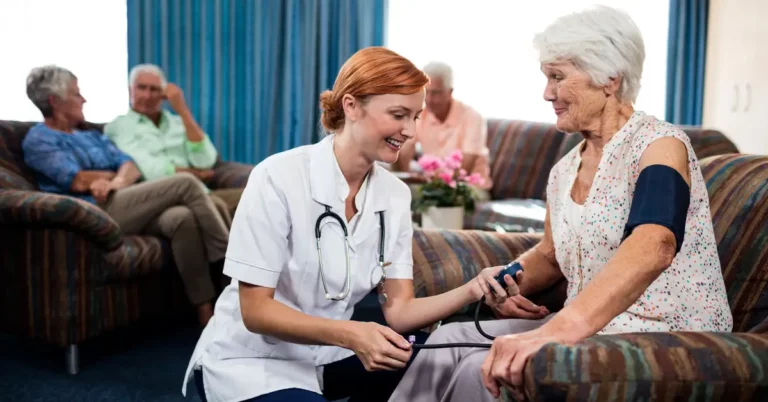“You are what you eat” is an old adage we have heard time and time again. A healthy diet is necessary for good health and to decrease the risks of developing conditions such as obesity or diabetes. This is even more important for people who are already diagnosed with these conditions. For these people, optimal nutrition requires paying attention to several characteristics of food, and one of these is the glycemic index.
Related article: Plant-based Diets and COVID-19
What is the glycemic index?
The glycemic index (GI), first proposed in 1981, is a measure of how quickly blood glucose levels rise after consuming a certain food in comparison with a reference standard, usually pure glucose. It demonstrates the glucose-raising potential of the carbohydrate content of a specific food. Glycemic index values are categorized as follows:
- Low GI: 1 to 55
- Moderate GI: 56 to 69
- High GI: 70 and above
*For reference, the GI value of pure glucose is 100.
To determine the glycemic index of certain foods, several healthy volunteers were recruited and were given 50 grams of a test food and 50 grams of glucose, on separate occasions. Blood glucose levels were taken prior to eating, and at set intervals after eating. After plotting glucose concentrations over time, the GI is then computed by dividing the area under the curve (iAUC) of a test food by the iAUC of glucose. The resulting value is then multiplied by 100 and expressed as a percentage of the control food.
GI = (iAUCtest food/iAUCglucose) x 100
What is glycemic load?
Although glycemic index may give an idea as to how high blood sugar can rise after consuming a certain food, one of its limitations include not accounting for serving size, or how much of a food we usually consume in one sitting. A typical example would be watermelon and a doughnut, which have the same GI of 76. However, a single serving of watermelon only contains 11 grams of carbohydrate, while a doughnut has 23 grams. Therefore, while they have a similar glycemic index, consuming a single serving of a doughnut would increase the blood glucose levels more than a single serving of watermelon.
Subsequently, the concept of glycemic load (GL) was developed to give a better idea of how food raises blood sugar levels. While GI values only show how rapidly blood glucose levels rise, GL values account for how much carbohydrates are in a typical serving of a certain food. GL is calculated by multiplying the GI by the amount of carbohydrates in grams in a single serving then dividing by 100.
GLFood = (GIFood x amount (g) of available carbohydrateFood per serving)/100
GL is then categorized into
- Low – GL ≤ 10
- Intermediate – GL of 11-19
- High – GL ≥ 20
In the above example, even though they have the same GI, watermelon has a lower GL of 8 compared to a doughnut with a GL of 17. Hence, watermelon would still be the healthier option in terms of limiting blood sugar spikes.
Here are the glycemic index and glycemic load of some common foods:
| Food | Glycemic Index | Serving Size | Carbohydrates Per Serving (grams) | Glycemic Load Per Serving |
| Potato, white, boiled (average) | 82 | 1 medium | 30 | 25 |
| Cornflakes | 79 | 1 cup | 26 | 20 |
| Bread, white-wheat flour | 71 | 1 large slice | 14 | 10 |
| Pancake | 67 | 6″ diameter | 58 | 39 |
| Rice, white, boiled | 66 | 1 cup | 53 | 35 |
| Rice, brown, boiled | 50 | 1 cup | 42 | 20 |
| Spaghetti, white, boiled (average) | 46 | 1 cup | 44 | 20 |
| Honey, pure | 58 | 1 Tbsp | 17 | 10 |
| Table sugar (sucrose) | 63 | 2 tsp | 10 | 6 |
| Apple, raw | 39 | 1 medium | 15 | 6 |
| Banana, raw | 55 | 1 cup | 24 | 13 |
| Skim milk | 33 | 8 fl oz | 13 | 4 |
| Peanuts | 18 | 1 oz | 6 | 1 |
| Orange, raw | 42 | 1 medium | 11 | 5 |
What are the known benefits of the glycemic index/glycemic load?
There is evidence to support that a low glycemic diet can result in improvements in Obesity, Type 2 Diabetes, Gestational Diabetes, Metabolic Syndrome, Polycystic Ovarian Syndrome, Fatty Liver Disease, and Dyslipidemia. Two recent systematic reviews/meta-analyses published in the journal Nutrients in 2019 demonstrated that diets with higher GI or GL pose a higher risk for developing Type 2 Diabetes as well as some cancers such as colorectal, bladder, and endometrial cancer. A study published in the New England Journal of Medicine also found an association between a high glycemic index diet and increased risk of cardiovascular disease and death.
Related article: Diabetes Myths and Facts
Remote patient monitoring (RPM) and the glycemic index
Remote patient monitoring solution supports blood glucose monitoring using capillary blood glucometers and continuous glucose monitors. For patients who have these devices, especially those with diabetes, monitoring blood glucose excursions and responses to different foods would definitely be helpful, easy, and timely. Being aware of the glycemic index and glycemic load of different foods, coupled with RPM technology, would enable patients to have more control of and involvement in managing their own health— leading to better overall health outcomes.
More benefits of Connected Health Technology of RPM
According to a study, patients with diabetes frequently fail to stick to their treatment plans or medication schedules, resulting in roughly half of diabetes patients failing to get their illnesses under control. Connected Health Technology is already being utilized to treat numerous chronic diseases – and has certainly been in the spotlight during the pandemic.
Evidence-based Connected Health Technology of RPM improves information exchange between patients and clinicians— as well as between different providers for patients with multiple diseases. It enables continuous collection of patient-generated health data to aid in the development of better treatment plans for particular patients as well as more general modeling.
Taking measurements at the comfort of the patients’ homes eliminates the need to travel, increases adherence to treatment or diet and exercise modifications, and reduces costs associated with hospitalizations or readmissions resulting from complications when they don’t adhere with medications.
Related article: RPM: The Key to Assisting Future Diabetes Patients
Takeaway
Glycemic index and glycemic load are tools that can enhance the dietary choices of people who are aiming to improve blood glucose control. This can help reduce the risks of developing certain diseases or the consequences of elevated blood glucose.
Given that there is no cure for diabetes, patients must actively manage their conditions and communicate regularly with their doctors. RPM empowers patients by allowing them to take some control of their own care from diet to medications— while receiving timely intervention from a healthcare provider remotely.
References:
1. https://pubmed.ncbi.nlm.nih.gov/6259925/
2. https://lpi.oregonstate.edu/mic/food-beverages/glycemic-index-glycemic-load
3. https://www.va.gov/WHOLEHEALTHLIBRARY/tools/glycemic-index.asp
4. https://www.va.gov/WHOLEHEALTHLIBRARY/tools/glycemic-index.asp
5. https://www.ncbi.nlm.nih.gov/pmc/articles/PMC6627334/
6. https://www.ncbi.nlm.nih.gov/pmc/articles/PMC6835610/
7. https://www.nejm.org/doi/pdf/10.1056/NEJMoa2007123
8. https://drkumo.com/diabetes-myths-and-facts/
9. https://drkumo.com/plant-based-diets-and-covid-19/
10. https://drkumo.com/rpm-the-key-to-assisting-future-diabetes-patients/








